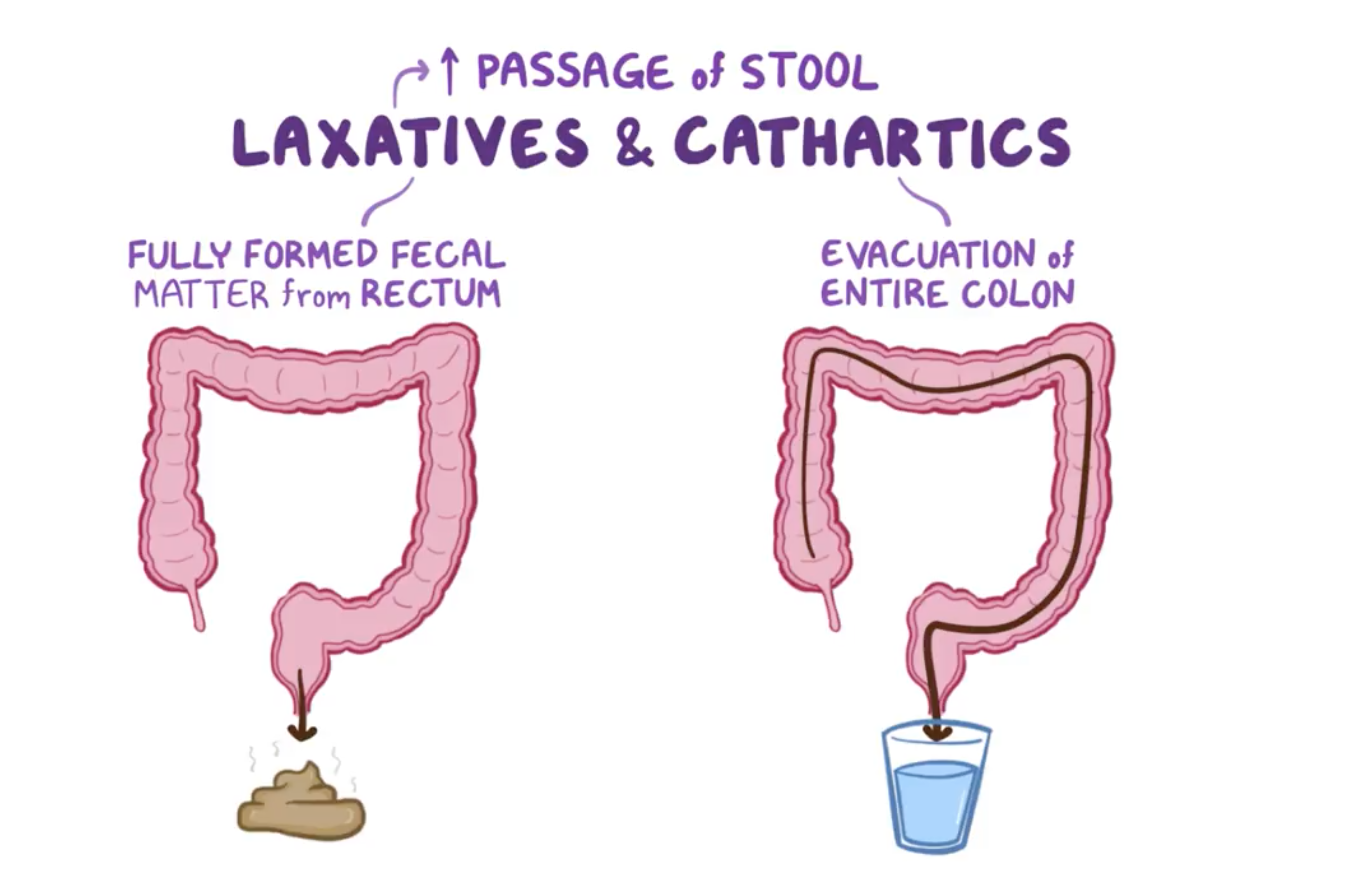
Comprehensive Guide on Laxatives: Treating and Preventing Constipation
Introduction
Constipation is a common gastrointestinal tract problem that affects millions of people worldwide. It refers to infrequent, difficult, or painful bowel movements, often accompanied by a feeling of incomplete evacuation. While constipation is typically a temporary condition, it can become chronic in some individuals. How to treat constipation? A variety of treatment options are available, with laxatives being a commonly used solution. However, lifestyle modifications and preventive measures can be even more effective in managing and preventing constipation. This article explores laxatives, their types, uses, and side effects, as well as lifestyle changes to improve bowel health. 
Understanding Constipation
Before diving into laxatives, it’s important to understand what causes constipation. Various factors can give rise to constipation, including:
Low fiber intake: Fiber helps increase stool bulk and promotes regular bowel movements.
Inadequate water consumption: Dehydration can make stool hard and difficult to pass.
Lack of physical activity: Exercise stimulates the muscles of the digestive tract, promoting regular bowel movements.
Medications: Certain drugs, such as painkillers (especially opioids), antidepressants, and iron supplements, can lead to constipation.
Stress: Psychological stress can affect the gastrointestinal system and cause temporary constipation.
Medical conditions: Conditions such as irritable bowel syndrome (IBS), diabetes, and hypothyroidism can contribute to constipation.
Laxatives: A Treatment for Constipation
Laxatives are substances or medicines that can assist relieve constipation by promoting bowel movements. While they can be effective in the short term, they should generally be used sparingly and as a last resort, as overuse can lead to dependency or exacerbate the condition.
Types of Laxatives
There are numerous types of laxatives, each working in certain ways to relieve constipation. Below is a list of the main types, their uses, and potential side effects.
1.Bulk-forming Laxatives
Bulk-forming laxatives are the most commonly recommended type and are often considered the safest for long-term use. They work by absorbing water into the stool, making it bulkier and easier to pass.
Common Ingredients: Psyllium, methylcellulose, polycarbophil.
How They Work: These laxatives increase the water content and size of the stool, stimulating peristalsis (the movement of the bowel) and facilitating the passage of stool.
Uses: Ideal for chronic constipation, especially when caused by low fiber intake.
Side Effects: Bloating, gas, and stomach cramps. If not taken with adequate water, they can worsen constipation.
2.Osmotic Laxatives
Osmotic laxatives produce effect by drawing water or fluid into the colon. It softens the stool and make it easier to pass. They are generally recommended for short-term use.
Common Ingredients: Lactulose, polyethylene glycol (PEG), magnesium hydroxide.
How They Work: These laxatives increase the water content in the intestines, softening the stool and stimulating bowel movement.
Uses: Commonly used for chronic constipation, especially in those who need a gentler, more gradual effect.
Side Effects: Dehydration, electrolyte imbalances, bloating, and abdominal discomfort. Long-term use can affect kidney function in susceptible individuals.
3.Stimulant Laxatives
Stimulant laxatives stimulate the muscles of the intestine to promote bowel movements. They are often used when other forms of laxatives fail to provide relief.
Common Ingredients: Bisacodyl, senna, cascara sagrada.
How They Work: These laxatives directly stimulate the bowel muscles, promoting peristalsis.
Uses: Effective for occasional constipation, especially in individuals who need quick relief.
Side Effects: Cramping, diarrhea, dehydration, and potential dependency if used regularly. Overuse can lead to a condition called “laxative abuse syndrome,” where the bowel becomes reliant on laxatives to function.
4.Lubricant Laxatives
Lubricant laxatives work by coating the stool and the intestinal walls, making it easier for stool to pass through the digestive tract.
Common Ingredients: Mineral oil.
How They Work: Lubricants lubricate the stool, helping it slide through the colon more easily.
Uses: Often used for people who should avoid straining, such as those recovering from surgery or childbirth.
Side Effects: Long-term use can impair the absorption of fat-soluble vitamins (A, D, E, K), and may lead to lipid pneumonia if aspirated into the lungs. Mineral oil should not be used collectively with bulk-forming laxatives.
5.Saline Laxatives
Saline laxatives draw water into the bowel using salts, stimulating bowel movements. They are typically used for occasional or acute constipation.
Common Ingredients: Magnesium citrate, magnesium sulfate.
How They Work: These laxatives increase water content in the intestines, softening the stool and promoting bowel movements.
Uses: Effective for fast-acting relief of constipation, especially before medical procedures like colonoscopies.
Side Effects: Electrolyte imbalances, dehydration, and bloating. Should be avoided in people with kidney disease or heart conditions due to the risk of electrolyte disturbance.
How to Treat Constipation with Laxatives
While laxatives can provide temporary relief, they are not a cure for constipation. Here are some guidelines on how to use them properly:
Use as a Short-Term Solution: Laxatives should not be relied upon for long-term relief. If constipation stays despite lifestyle changes, see a healthcare professional.
Start with the Mildest Option: If you’re new to laxatives, start with bulk-forming laxatives or osmotic laxatives, as they are the gentlest on the digestive system.
Follow the Dosage Instructions: Always follow the instructions on the label and avoid exceeding the recommended dose.
Stay Hydrated: Drink plenty of water when taking laxatives, as this helps prevent dehydration and supports their effectiveness.
Use Occasional Stimulant Laxatives Cautiously: Stimulant laxatives should only be used occasionally and not as a long-term solution, as they can lead to dependence or worsen constipation.
How to treat constipation by Lifestyle Modifications to Prevent Constipation
In addition to using laxatives, lifestyle modifications are crucial in both treating and preventing constipation. Here are some tips to follow:
1.Increase Fiber Intake
Fiber is essential for good digestive health. It adds bulk to stool and helps it move through the intestines more efficiently. Foods rich in fiber include:
- Whole grains (e.g., oats, brown rice)
- Fruits (e.g., apples, pears, berries)
- Vegetables (e.g., spinach, broccoli, carrots)
- Legumes (e.g., beans, lentils)
The recommended fiber intake per day is about 25 grams for women and 38 grams for men. Gradually increase your fiber intake to prevent gas and bloating.
2.Drink Plenty of Water
Adequate hydration is vital for softening stool and preventing constipation. Drink at least 8 glasses of water a day. If you’re physically active or living in a hot climate, you may need more.
3.Exercise Regularly
Regular physical activity stimulates the muscles in the intestines, which can help prevent constipation. Aim for at least 30 minutes of moderate exercise most days of the week, such as walking, jogging, or yoga.
4.Develop Healthy Bathroom Habit
Don’t Ignore the Urge: Respond to the body’s natural urge to have a bowel movement. If you will ignore the urge it can results in constipation.
Set a Routine: Try to have a bowel movement at the same time every day. This can help regulate your digestive system.
5.Reduce Stress
Stress can impact digestion, leading to constipation or other gastrointestinal issues. Practice relaxation techniques such as deep breathing, meditation, or yoga to reduce stress.
Conclusion
While laxatives are an effective short-term solution for constipation, they should not be the primary treatment method. Incorporating fiber-rich foods, staying hydrated, exercising regularly, and managing stress are essential components of a healthy digestive system. If constipation persists despite lifestyle changes, consult a healthcare provider to rule out any underlying medical conditions. By adopting these preventive measures, you can significantly reduce your risk of chronic constipation and improve overall digestive health.